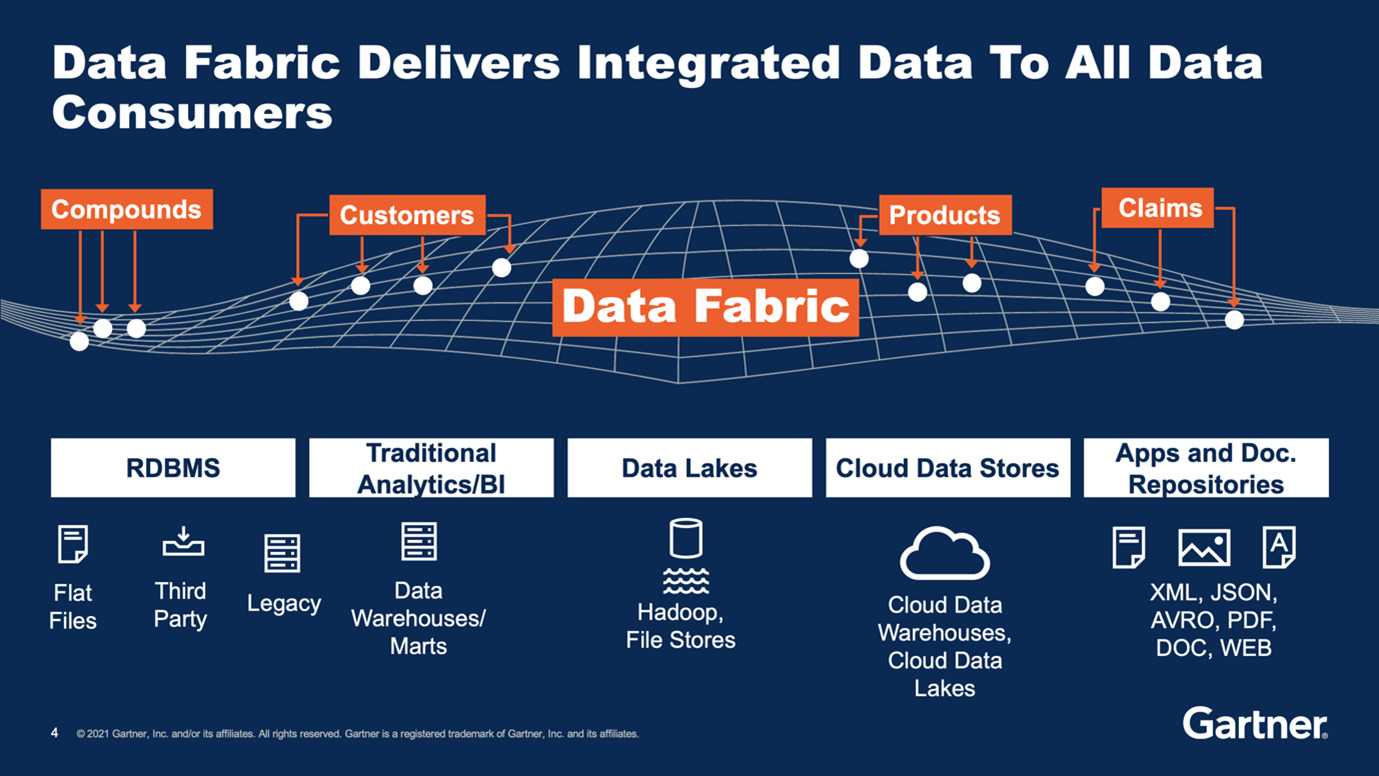Technology Trends - 2022
Data is a key enabler for the technology trends identified for 2022. With the digitization efforts, enormous amounts of data have been created and has become key asset for every organization. As such, with the growing availability of data, there exists potential to enhance organizational data-driven decisions.
Data Fabric
Data fabric is a simplified, unified, and single architecture that encompasses an integrated set of technologies and services. This collection delivers integrated and enriched data using the correct methodology, to the right data customer, and at the correct time. Data fabric comprises key data management technologies including data catalog, data governance, data integration, data pipelining, and data orchestration. According Gartner, data fabric is a top 10 data and analytics trends and forecasts that by 2024, 25% of every data management vendor will be providing a comprehensive data fabric solution.
Data Lake
A data lake is a storage repository that is located centrally and holds all the big data from multiple sources in its absolute raw form. It has the capability to store structured, unstructured, and/or semi-structured data. Also, a data lake has a flat architecture. This means that any data can be stored in a flexible format for future reference. At the time of storing data, the data lake will associate the data with metadata tags and other identifiers for faster retrieval. Thus, data lakes are built on a cluster of inexpensive and highly scalable hardware components. Therefore, according to this understanding, a data lake is referred to the ad-hoc way data is stored compared to the clean and well-processed data in a traditional data warehouse system.
"The data lake architecture is a store-everything approach to big data. Data is not classified when it is stored in the repository and the value of the data is not clear at the outset. When the data is accessed, only then will it be classified and organized for analysis."
Reference:
- Data Lake:
https://www.techopedia.com/definition/30172/data-lake - Data Fabric:
https://www.techfunnel.com/information-technology/what-is-data-fabric/ - Data Fabric:
https://www.ibm.com/topics/data-fabric - Positioning the Data Fabric Future:
https://www.ibm.com/topics/data-fabric - Data Lake:
https://www.techfunnel.com/information-technology/data-fabric-vs-data-lake/ - The Top 10 Tech Trends In 2022 Everyone Must Be Ready For Now:
https://bernardmarr.com/the-top-10-tech-trends-in-2022-everyone-must-be-ready-for-now/ - What Is the Future of Tech: 23 Technologies by 2022:
https://www.computer.org/publications/tech-news/trends/2022-report - The top trends in tech:
https://www.mckinsey.com/business-functions/mckinsey-digital/our-insights/the-top-trends-in-tech - Tech Trends 2022:
https://www2.deloitte.com/us/en/insights/focus/tech-trends.html
https://www2.deloitte.com/content/dam/insights/articles/US164706_Tech-trends-2022/DI_Tech-trends-2022.pdf - Top 9 New Technology Trends for 2022:
https://www.simplilearn.com/top-technology-trends-and-jobs-article - Top 10 essential technology trends you must follow in 2022:
https://www.itproportal.com/features/top-10-essential-technology-trends-you-must-follow-in-2022/ - Meet me in the metaverse: The continuum of technology and experience, reshaping business:
https://www.accenture.com/us-en/insights/technology/technology-trends-2022 - Exploding Topics:
https://explodingtopics.com/blog - Tech Trends for 2022 and Beyond:
https://www.rutgers.edu/news/tech-trends-2022-and-beyond-0

